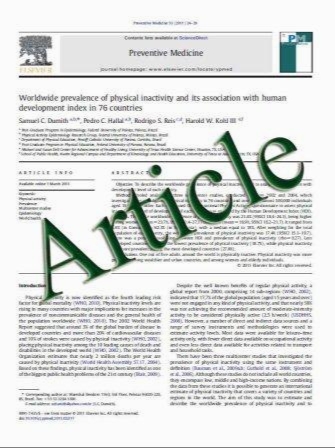Colorectal Cancer in the Cotton Top Tamarin (Saguinus oedipus): How Do They Evade Liver Metastasis?
- نوع فایل : کتاب
- زبان : انگلیسی
- مؤلف : Martin Tobi Mijin Kim Regis Zimmer James Hatfield Michael Kam Nabiha Khoury Angela Carville Michael J. Lawson William P. Schiemann
- چاپ و سال / کشور: 2010
Description
Background and Aim A major cause of cancer-related deaths is the development of liver metastasis. To better understand the metastatic process, we studied the cotton top tamarin as an animal model, which spontaneously develops colorectal cancer but rarely liver metastasis. Method DNA was extracted from primates and Hot-Start PCR was performed. Sequencing was achieved with Big- Dye TerminatorTM Sequencing Kit. Tissue expression and glycosylation studies were also performed for carcinoembryonic antigen family proteins. Results Sixty-three percent of tamarin carcinoembryonic antigen had PELPK changes essential for carcinoembryonic antigen hepatic uptake. Tamarin carcinoembryonic antigen showed minimal glycosylation. Cotton top tamarin livers showed reduced carcinoembryonic antigen-receptor expression and were devoid of CEACAM1 (BGP) as compared to human liver despite positive expression in cotton top tamarin gallbladder mucosa. Peritumoral regions showed more CEACAM1 in human hepatocyte cytoplasm than in biliary canaliculi (P\0.05). Therefore, tamarins may evade liver metastasis through mechanisms of decreased hepatic uptake by altered PELPK sequences, reduced glycosylation and reduced carcinoembryonic antigen-receptor expression. Furthermore, the absence of cotton top tamarin hepatocyte CEACAM1 may lead to alteration of the liver milieu creating an inhospitable ‘‘infertile-field’’ for metastases. Conclusions Four hypotheses explain a complex mechanism for the lack of liver metastasis: (1) carcinoembryonic antigen PELPK-encoding nucleotide sequence changes, (2) minimal carcinoembryonic antigen glycosylation, (3) reduced carcinoembryonic antigen-receptor expression, and (4) reduced CEACAM1 distribution, a putative vascular endothelial growth factor. While these hypotheses are not necessarily causal they are testable and therefore are feasible targets for prevention of hepatic metastasis in man.
Dig Dis Sci (2011) 56:397–405 DOI 10.1007/s10620-010-1314-2 Received: 23 March 2010 / Accepted: 14 June 2010 / Published online: 20 July 2010


